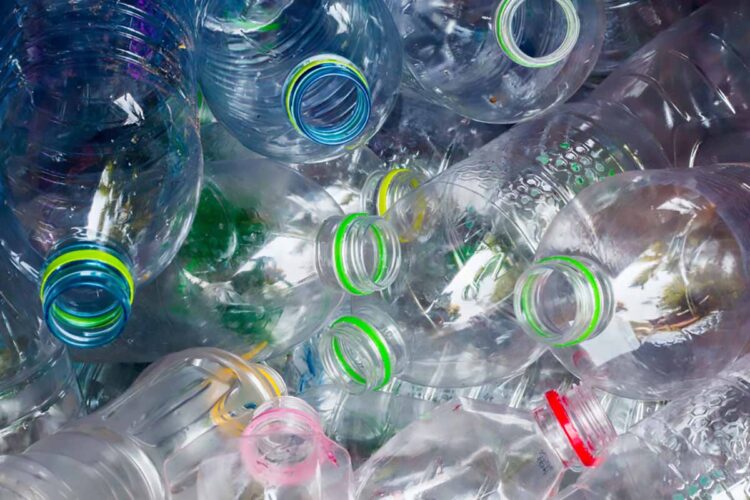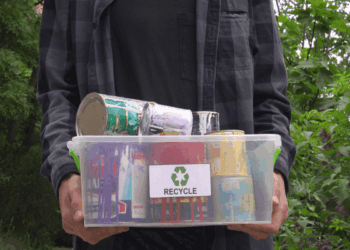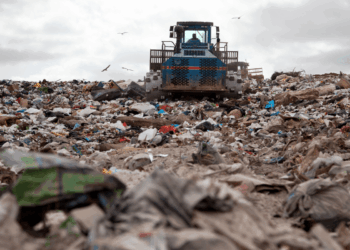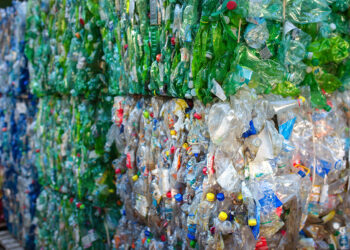The U.S. is processing more of its scrap plastic domestically, but the overall weight of plastic recycled in 2020 dropped just under 6% from 2019, according to an annual industry report.
The 2020 U.S. Post-consumer Plastic Recycling Data Report called for “immediate solutions” to boost recycling levels back up, especially as the demand for post-consumer resin soars.
The report found that 4.8 billion pounds of post-consumer plastics were recycled in 2020, which is 5.7% lower than in 2019. That’s a decline of 290 million pounds. The report includes bottles, non-bottle rigid plastics, film and other plastics, but it excludes foam.
It’s no surprise that a lower weight total would be seen in 2020, a year in which the pandemic upended recycling collection in multiple ways.
Still, the latest numbers are the continuation of declines in total volumes recovered. In 2019, the industry saw a 0.5% overall decrease in the weight of plastics recycled, falling by 27 million pounds.
Steve Alexander, president and CEO of the Association of Plastic Recyclers (APR), said in a press release that, simply, “we need more supply.”
“We need to focus our efforts on technologies that are up and running today,” he said. “Mechanical recyclers have the capacity to process more material but lack the supply to meet the current demand for post-consumer resin (PCR). Expanding and streamlining recycling collection programs, less confusion with labeling and reducing contamination through design for recyclability should be key priorities.”
The report was sponsored by APR, the Foundation for Plastic Recycling, The Recycling Partnership and the U.S. Plastics Pact. It was compiled by Stina and based on surveys by Stina and the National Association for PET Container Resources (NAPCOR).
(APR owns Resource Recycling, Inc.)
Declining recycling rates for bottles
Bottles continued to make up most of the plastic recovered for recycling, at 57.1%, followed by non-bottle rigids at 22%, film at 20.5%, and other plastics at 0.3%.
Broken down by scrap type, the study found that bottles, non-bottle rigid plastics and other plastics all saw recycling rate declines individually in 2020.
The PET bottle recycling rate was 27.1% in 2020 (with total weight collected at 1.8 billion pounds), and HDPE was 28.8% (943 million pounds collected). In 2019, those rates were 27.9% and 30.9%, respectively. The combined bottle recycling rate, which includes PET, HDPE, PP and other polymers, was 27.2% in 2020, down from 28.7% in 2019.
Bottle recycling rates have been falling since 2015, according to the 2015, 2016, 2017 and 2018 reports.
The weight of non-bottle rigids recycled in 2020 declined by 206.1 million pounds. That was a 16.3% drop and the largest decrease of all categories. High-density polyethylene (HDPE) and polypropylene (PP) together made up roughly 75% of the roughly 1 billion pounds of non-bottle rigid plastic recycled, at 41.1% and 34.7%.
About 16.5 million pounds of other plastics were recycled, a 5.1% decline from 2019.
However, film collection was up by 0.8%, or 8 million pounds, for a total of 985.6 million pounds. That category marked increases in polyethylene (PE) mixed color and PE agricultural films and drops in PE clear film, PE retail bags, and other film.
Of that film, 17.8% was exported overseas, a decrease of about 103 million pounds compared to 2019, which saw an export rate of 28.5%. Overall, North American reclaimers purchased more film in 2020 at 809.8 million pounds, compared with 698.8 million pounds in 2019.
When it comes to the percentage of scrap plastics sourced from the U.S., the results varied by category. For example, North American reclaimers sourced 97% of their bottles from the U.S. in 2020, up from about 94% in 2019.
But for non-bottle rigids, 22% were sourced from the U.S. in 2020, down from 25% in 2019.
And film sourced from the U.S. increased from 19% in 2019 to nearly 21% in 2020. “Other” plastics stayed steady at 0.3%.
Pandemic impacts
The press release pointed to COVID-19 disruptions as the cause for falling rates.
“Major disruptions in collection, transportation and staffing shortages, as well as supply chain issues impacted the supply of material available for recycling,” the press release said.
It noted that “despite those challenges, the trend of more U.S. sourced post-consumer plastics acquired for use by reclaimers in North America continues.”
Only 8% of post-consumer plastics sourced in the U.S. were exported overseas in 2020, compared with 12% in 2019. In 2010, just under 40% of North American plastics were shipped overseas, but policies such as China’s National Sword helped shift those numbers.
The report also found that U.S. PET reclaimer capacity increased to 2.7 billion pounds in 2020, up from 2.4 billion pounds in 2019. And for the first time, more PET bottles were turned back into bottles than turned into fiber in 2020.
HDPE bottle capacity also increased in 2020 to 1.4 billion pounds, from 1.3 billion pounds, and film capacity increased from 1 billion pounds in 2019 to 1.1 billion pounds.
Non-bottle rigid plastic capacity stayed steady at 1.2 billion pounds.
Keefe Harrison, CEO of The Recycling Partnership, called for investment into the U.S. recycling system to bring service to the 40 million American households that currently lack the opportunity to recycle.
“Scaling these smart solutions pays returns for the environment and the economy,” Harrison noted.
Emily Tipaldo, executive director of the U.S. Plastics Pact, said transparency like that provided in the report was critical.
“Adherence to the APR Design Guide for Plastics Recyclability and the elimination of contaminants in the stream will improve the quality and quantity of what is reclaimed for recycling,” she added.

























